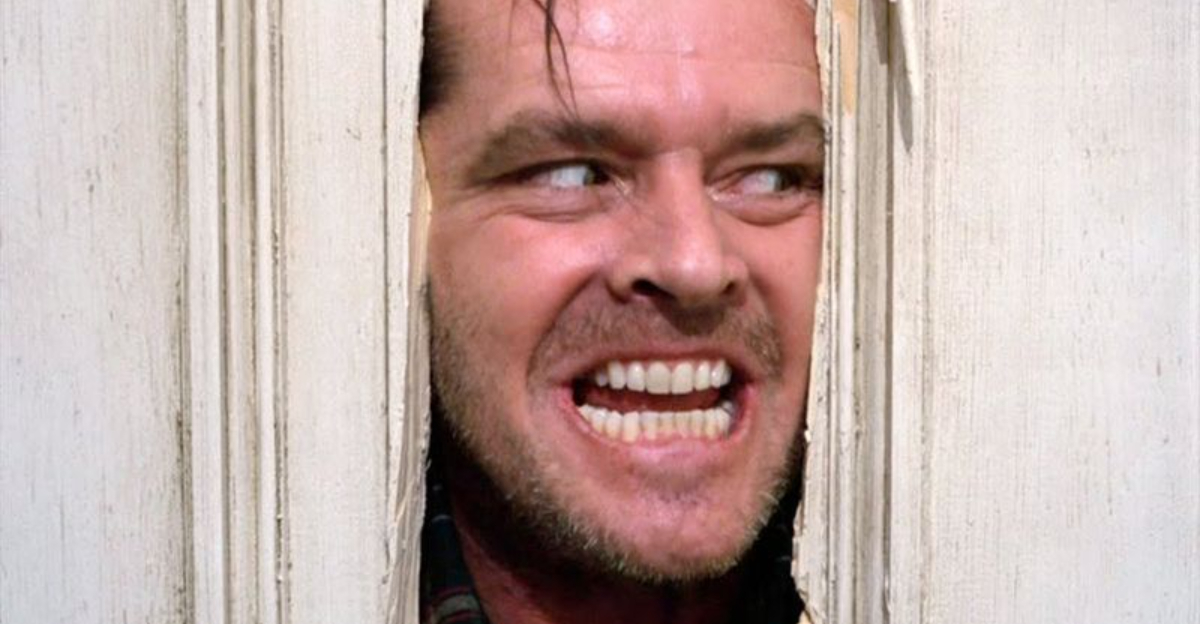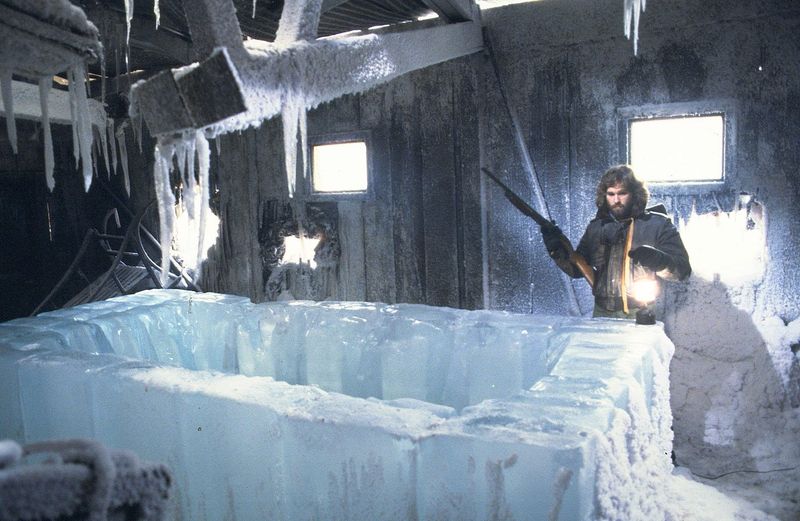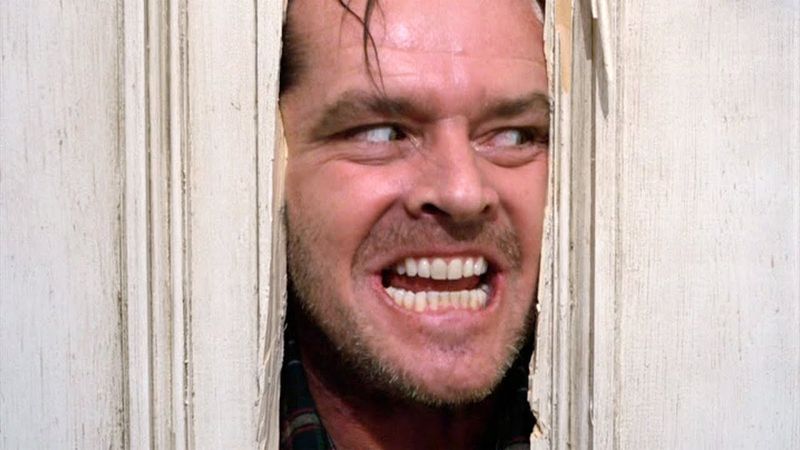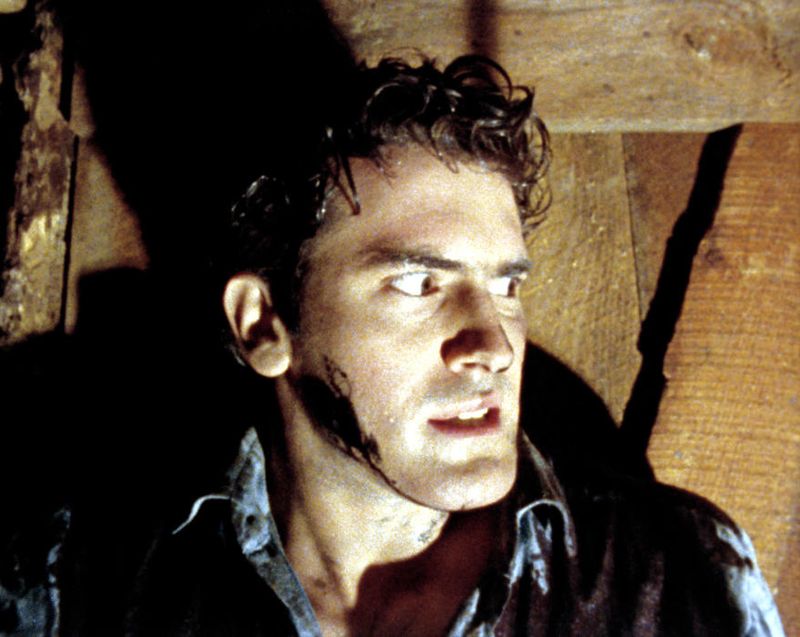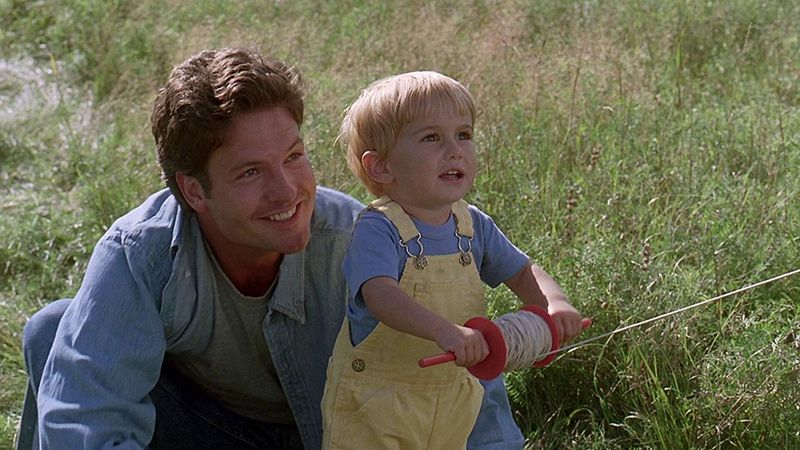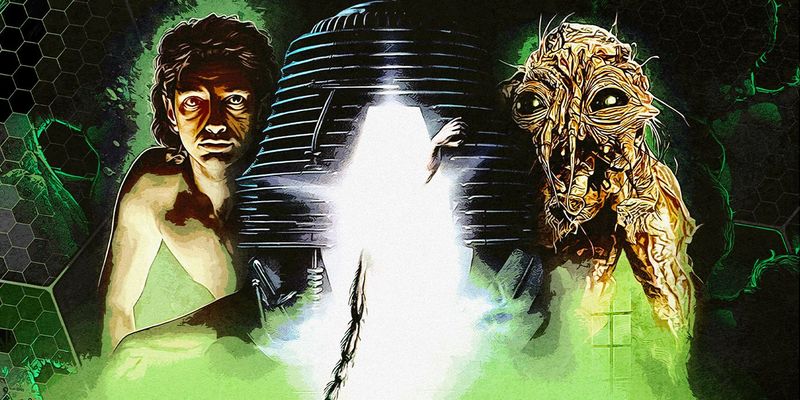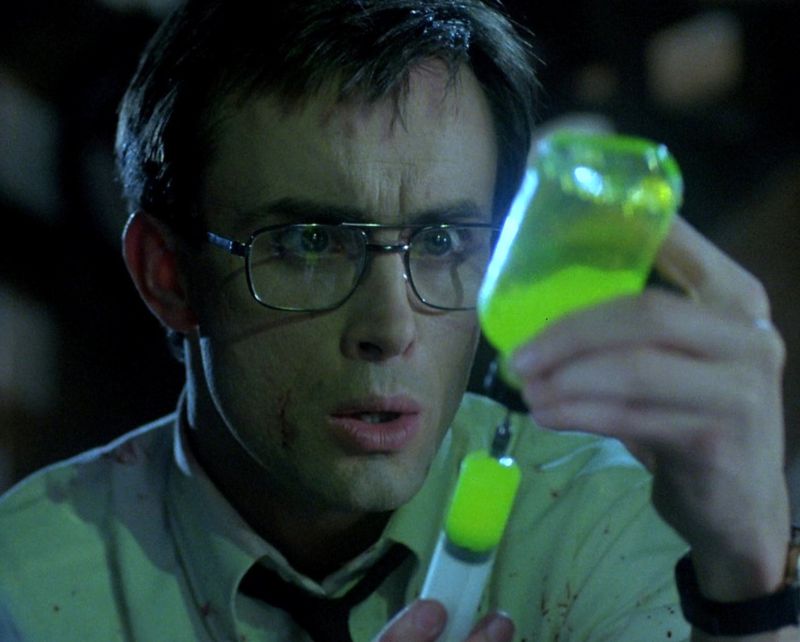The 1980s changed horror movies forever with groundbreaking special effects and unforgettable monsters. These films didn’t just make us scream—they crawled under our skin and stayed there. From haunted hotels to dream demons, these scary movies pushed boundaries in ways that still influence filmmakers today.
1. The Thing (1982): Trust No One
An Antarctic research team faces an alien that perfectly mimics any living organism it consumes. The paranoia becomes suffocating as crew members can’t tell who remains human and who harbors the monster within.
Rob Bottin’s revolutionary practical effects showcase grotesque transformations that hold up remarkably well today. The infamous chest-chomping scene and spider-head sequence demonstrate body horror at its most visceral.
Director John Carpenter crafts unbearable tension through isolation, mistrust, and the knowledge that help will never arrive. Initially a box office disappointment, The Thing has rightfully earned recognition as a masterpiece of suspense and creature design.
2. A Nightmare on Elm Street (1984): Sleep At Your Own Risk
Wes Craven revolutionized horror by creating a killer who strikes when victims are most vulnerable—in their dreams. Freddy Krueger’s burned face, striped sweater, and razor-fingered glove became instantly recognizable symbols of terror.
The film brilliantly blurs the line between dreams and reality, leaving characters and viewers uncertain when danger is real. Johnny Depp’s bed-swallowing death scene, with its geyser of blood, remains one of horror’s most shocking moments.
Beneath the supernatural scares lies a clever commentary on parental sins revisited upon children. This franchise-launching hit made millions afraid to fall asleep.
3. The Shining (1980): Isolation Turns Deadly
Jack Nicholson’s unhinged performance as a writer losing his mind in a snowbound hotel created one of cinema’s most terrifying descents into madness. Those eerie twins standing hand-in-hand in the hallway still haunt viewers decades later.
Director Stanley Kubrick transformed Stephen King’s novel into something uniquely disturbing through unsettling camera work and disorienting music. The blood-filled elevator and the frozen maze chase sequence remain iconic horror moments.
Fun fact: The famous “Here’s Johnny!” line was improvised by Nicholson on set, drawing from Ed McMahon’s introduction of Johnny Carson on The Tonight Show.
4. Hellraiser (1987): Pain and Pleasure Inseparable
Clive Barker’s directorial debut introduced audiences to the Cenobites—otherworldly beings who can’t distinguish between extreme pleasure and unbearable pain. Their leader, Pinhead, with his grid-scarred face and pins driven into his skull, became an instant horror icon.
The film’s central puzzle box, the Lament Configuration, represented forbidden desires with terrible consequences. Frank’s resurrection scene, where his body forms from dripping blood and exposed muscle, showcases the film’s unflinching approach to body horror.
Unlike slasher films of the era, Hellraiser explored darker themes of desire, obsession, and transformation that gave its horror a philosophical edge.
5. Poltergeist (1982): Suburban Nightmares Come True
“They’re heeeere!” Little Carol Anne’s announcement of ghostly visitors turned ordinary household objects into instruments of terror. The film’s genius lies in transforming familiar comfort—TV sets, children’s toys, and suburban homes—into sources of supernatural danger.
The clown doll attack and the swimming pool corpse scene traumatized an entire generation of young viewers. Behind the scenes, rumors of a “Poltergeist curse” circulated after several cast members died unexpectedly following the film’s release.
Producer Steven Spielberg and director Tobe Hooper created a perfect blend of family drama and supernatural horror that made haunted house stories relevant for the modern era.
6. The Evil Dead (1981): Cabin Trip From Hell
Sam Raimi’s ultra-low-budget debut showcased how creativity can overcome financial limitations. Five friends in a remote cabin unwittingly release demons by playing a recorded incantation, leading to increasingly unhinged possession scenarios.
The film’s frenetic camera work—including the now-famous “evil force” POV shots racing through the forest—created a uniquely unsettling visual style. Bruce Campbell’s performance as Ash established him as horror royalty, particularly during the gruesome scenes where he must dismember his possessed friends.
Originally banned in several countries for its extreme violence, The Evil Dead proved that independent filmmaking could create genuinely frightening experiences without Hollywood budgets.
7. Pet Sematary (1989): Death Is Not The End
Based on what Stephen King considered his most frightening novel, this film explores grief’s destructive power when a father discovers a burial ground that returns the dead to life—changed for the worse. The haunting Zelda scenes, featuring the sister twisted by spinal meningitis, create some of the decade’s most disturbing imagery.
Fred Gwynne delivers the film’s most chilling line: “Sometimes dead is better.” Young Gage’s resurrection and subsequent murderous rampage proved that child antagonists could be genuinely terrifying.
The film’s exploration of parental grief makes the horror elements particularly devastating. This psychological foundation elevates Pet Sematary beyond typical zombie narratives into something far more emotionally resonant.
8. The Fly (1986): Science Gone Horrifically Wrong
David Cronenberg’s reimagining of the 1958 classic takes body horror to unprecedented levels. Jeff Goldblum plays scientist Seth Brundle, whose teleportation experiment goes catastrophically wrong when a fly enters the chamber during testing.
The film’s genius lies in showing Brundle’s gradual, agonizing transformation rather than an instant change. Viewers witness his excitement about enhanced abilities before horror sets in as fingernails fall off and strange hairs sprout from open wounds.
Behind the grotesque makeup effects lies a heartbreaking love story and powerful AIDS allegory. Goldblum’s performance captures both the intellectual arrogance that leads to disaster and the profound humanity that makes his deterioration so devastating.
9. Re-Animator (1985): Mad Science Meets Mayhem
Herbert West’s glowing green serum brings the dead back to life with catastrophic results in this gleefully deranged adaptation of H.P. Lovecraft’s story. Jeffrey Combs delivers a brilliantly unhinged performance as the socially awkward medical student obsessed with conquering death.
The film balances gruesome horror with pitch-black comedy, particularly during the infamous severed head scene. Director Stuart Gordon pushed boundaries with practical effects that still shock modern audiences accustomed to CGI.
Re-Animator’s fearless approach to taboo subjects and its refusal to take itself too seriously created a unique tone that influenced countless horror-comedies. The film proves that sometimes the most effective scares come with a twisted smile.
10. Prince of Darkness (1987): Ancient Evil Awakens
John Carpenter’s underappreciated masterpiece combines quantum physics with religious horror. A mysterious cylinder containing swirling green liquid—revealed to be Satan himself in physical form—is discovered beneath an abandoned church.
The film’s most terrifying element might be the dream broadcast: a fuzzy transmission seemingly sent backward through time warning of impending doom. The possessed homeless people surrounding the church create an atmosphere of mounting dread and inescapable danger.
Alice Cooper makes a memorable appearance as a murderous vagrant who impales a victim with a bicycle. Prince of Darkness proves that cosmic horror can be just as frightening as more conventional monsters when handled with Carpenter’s masterful restraint.
